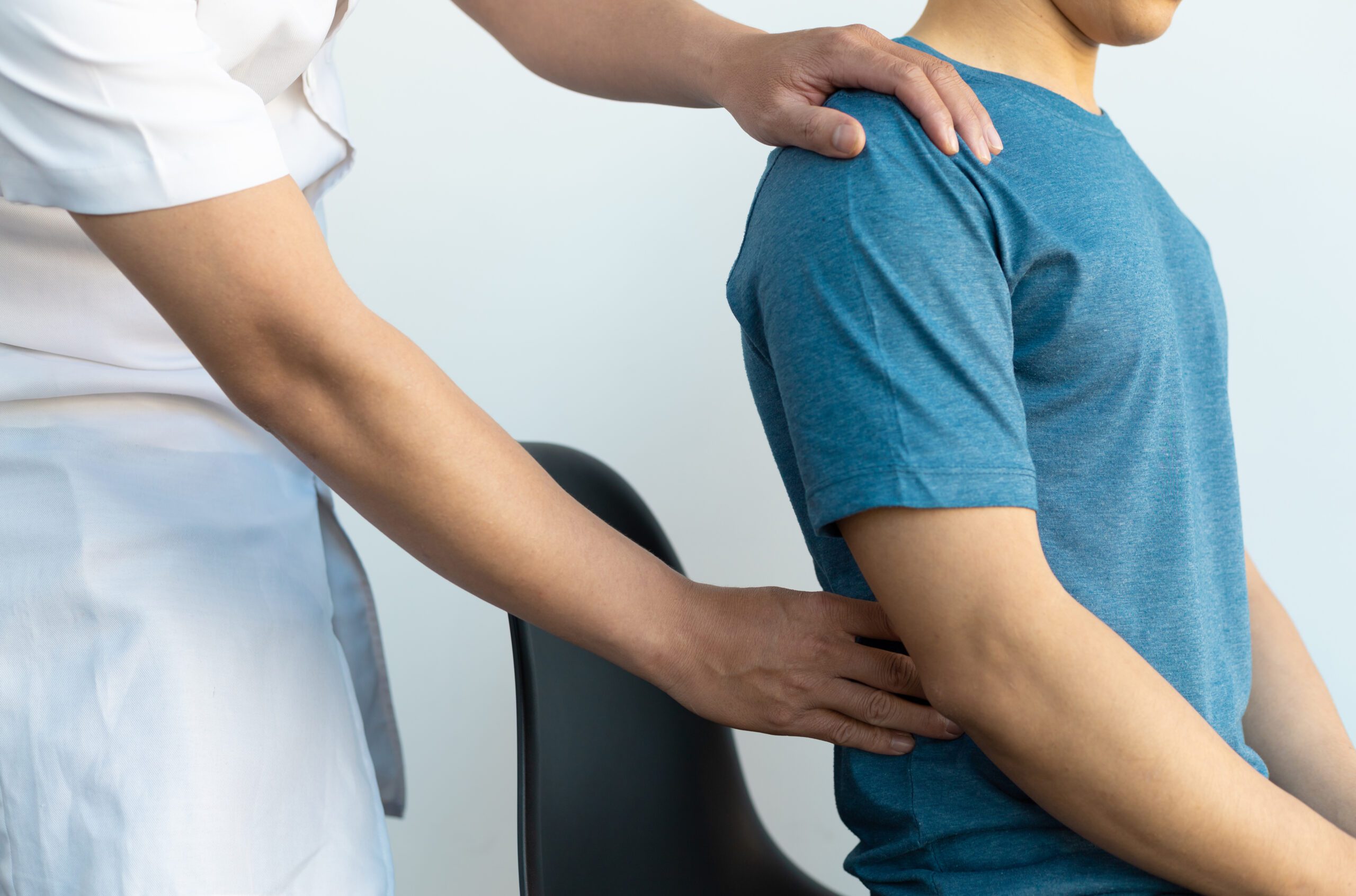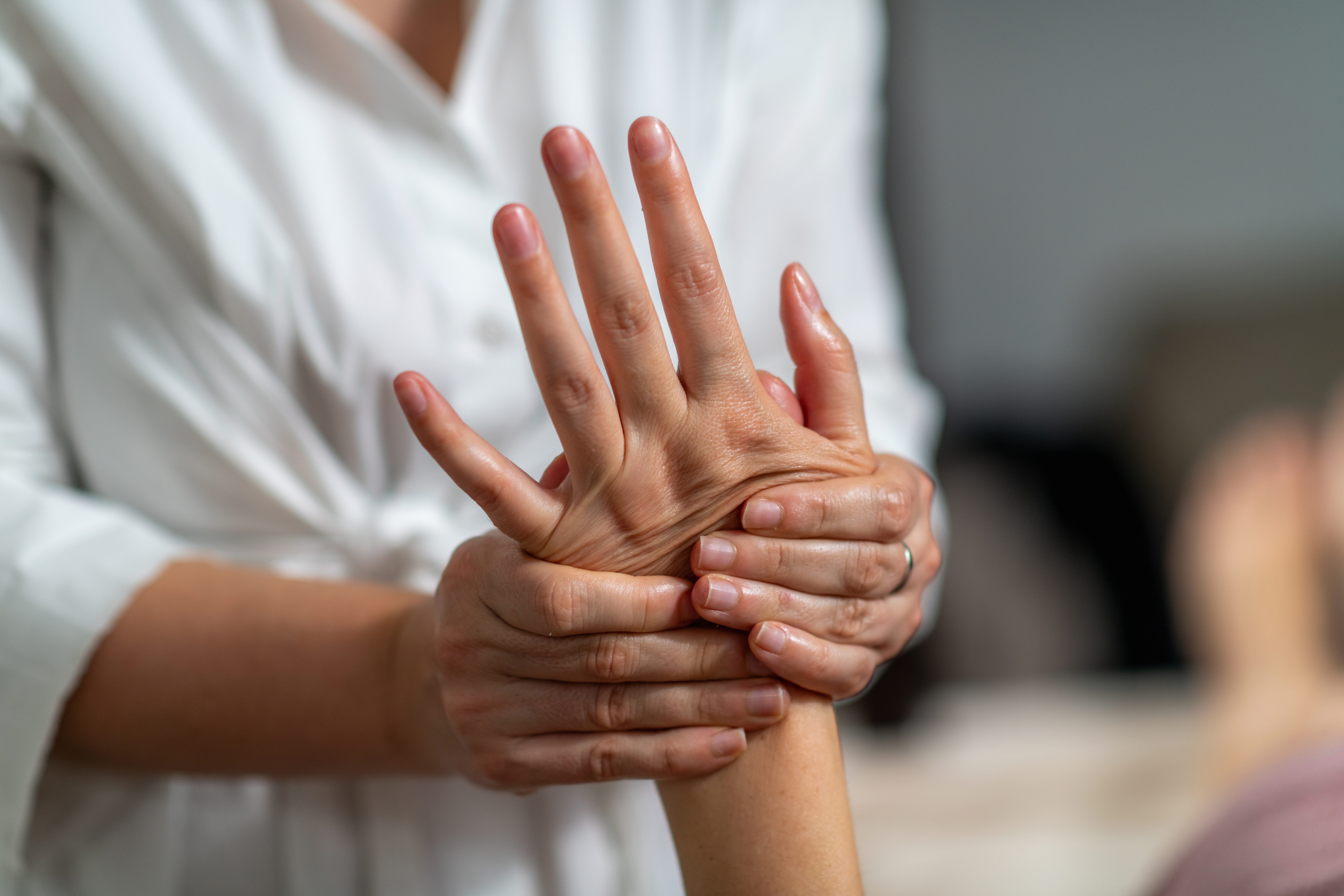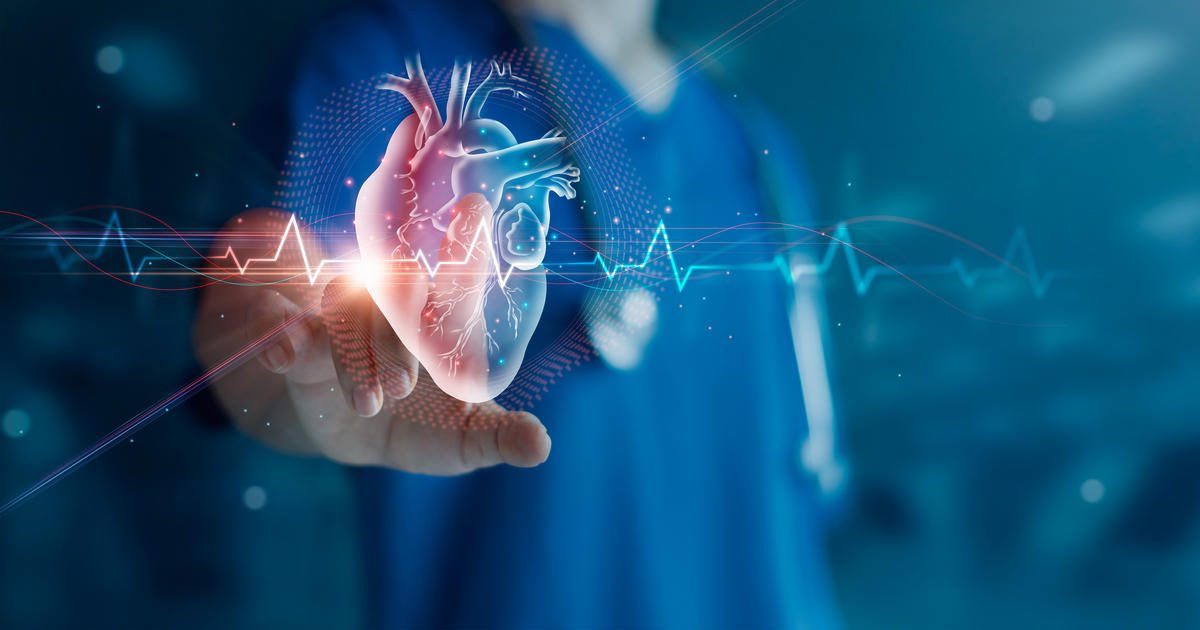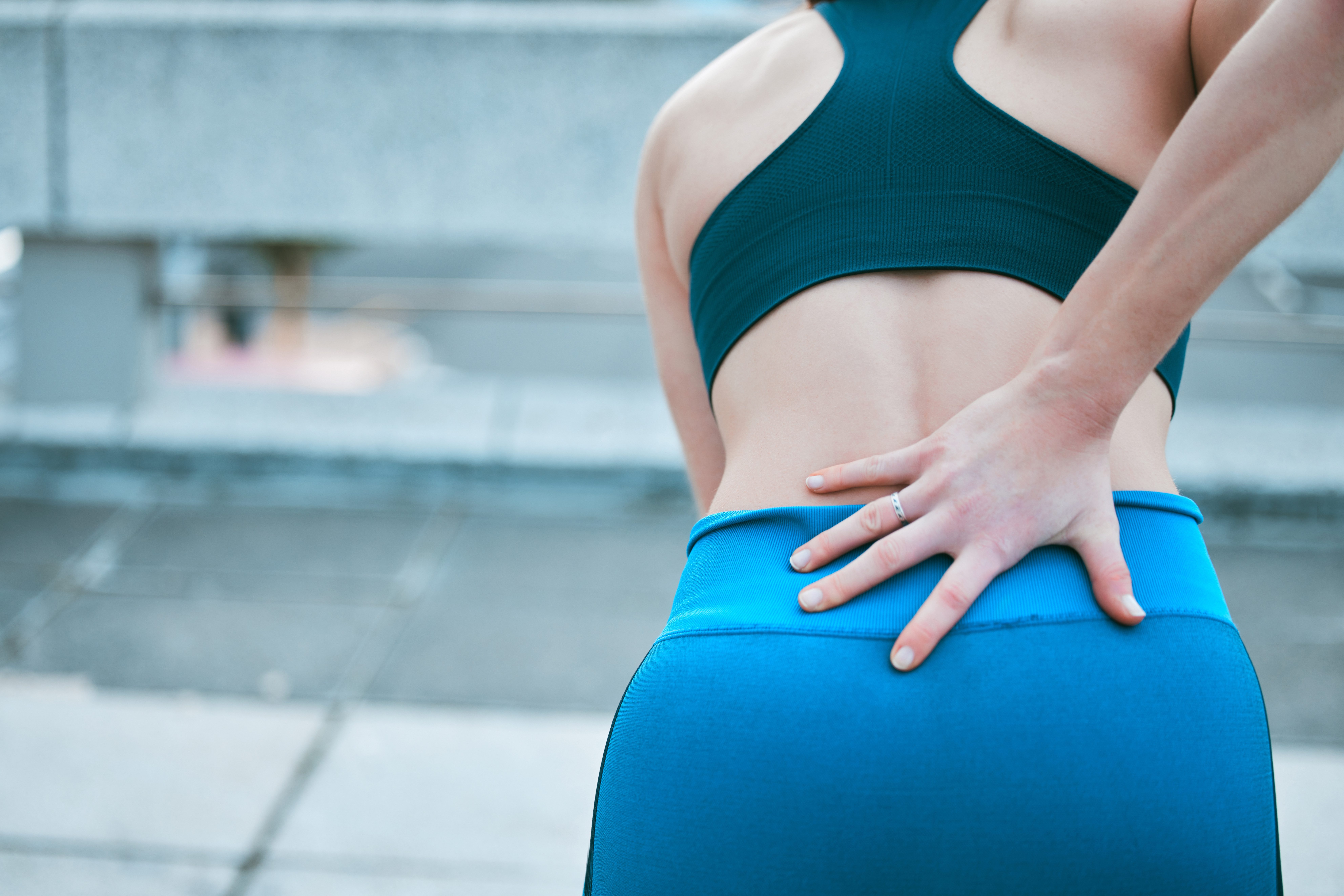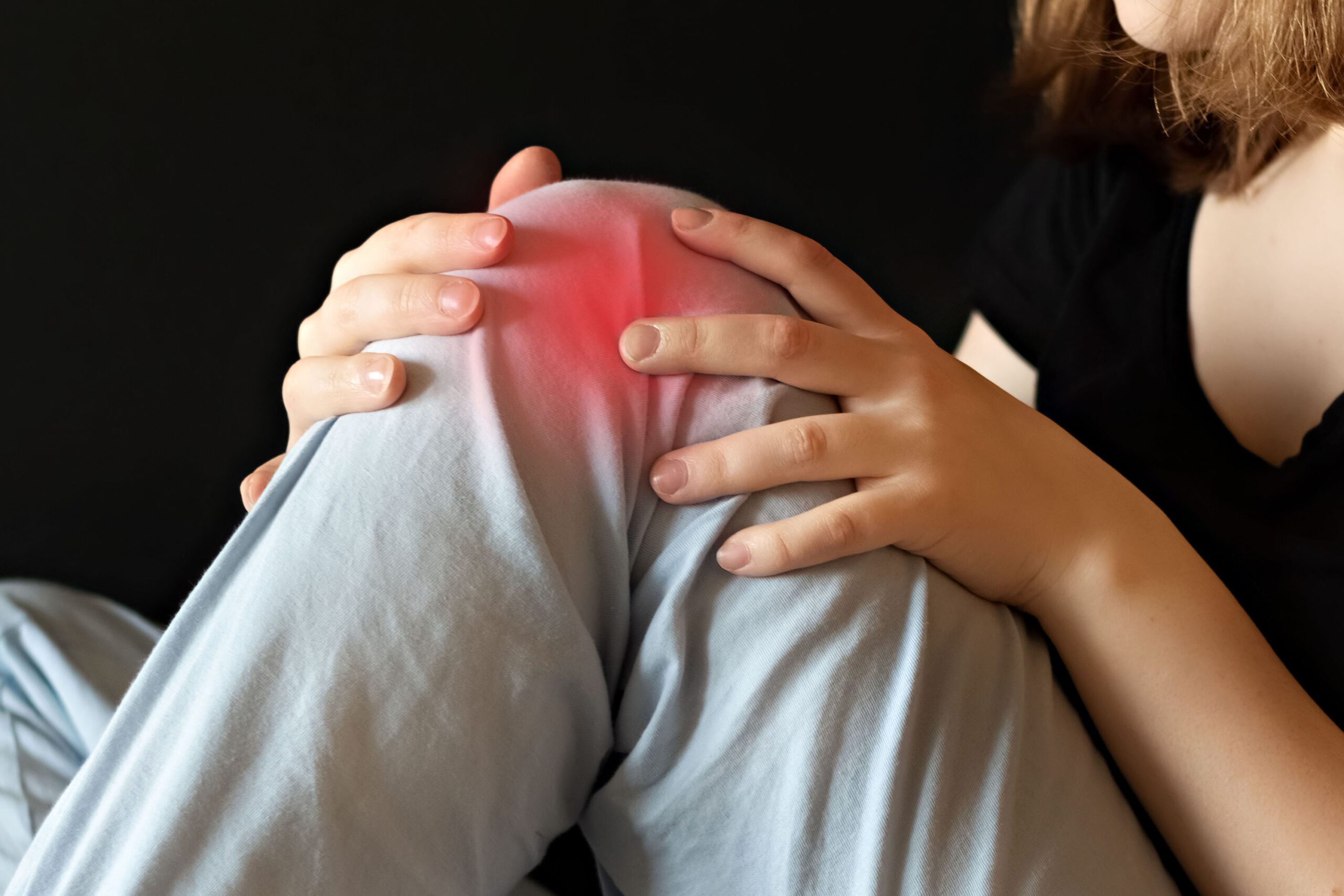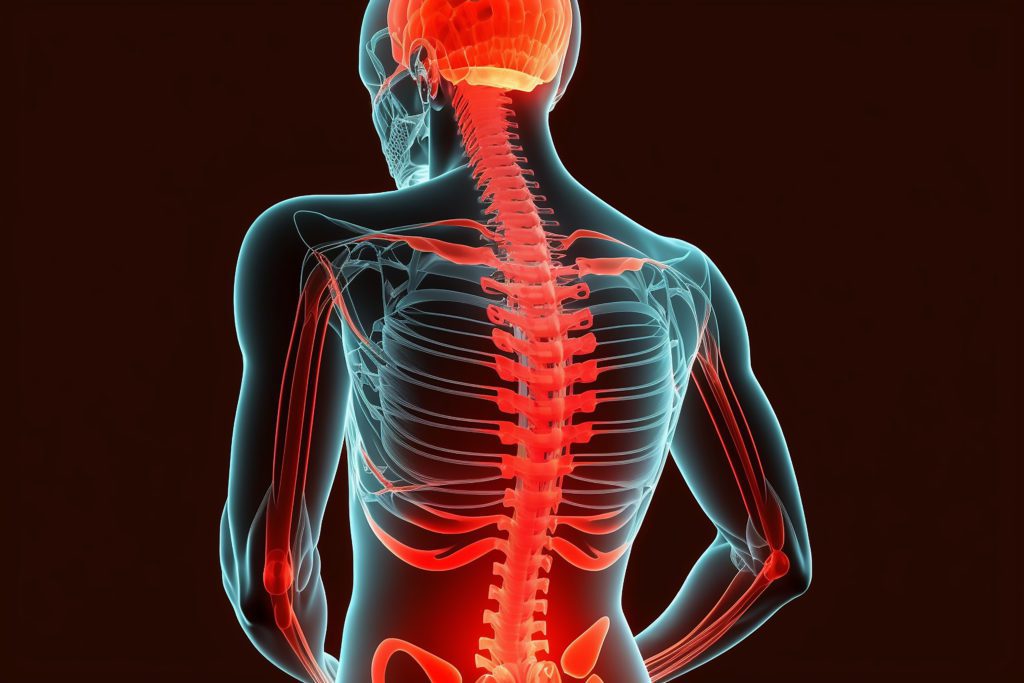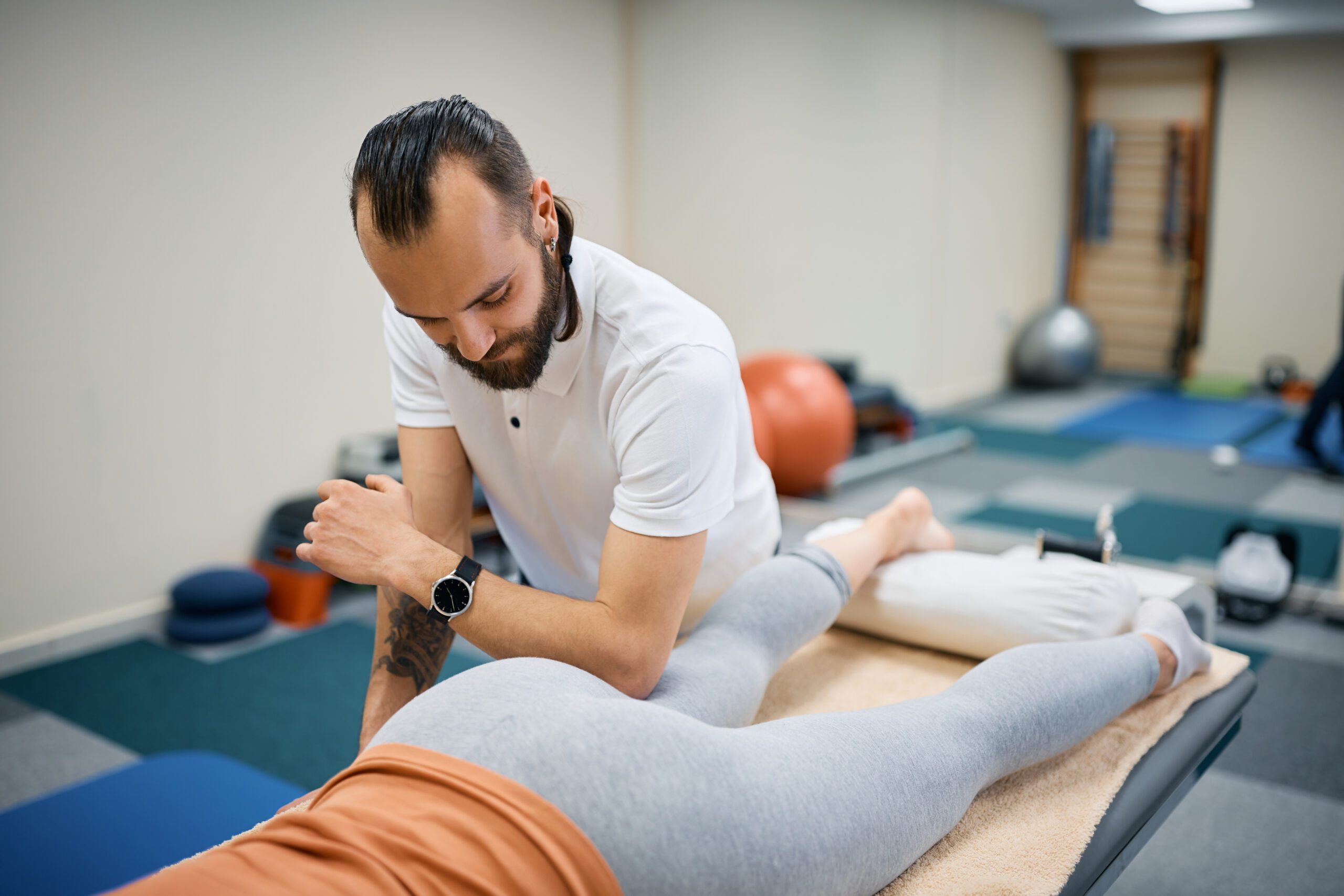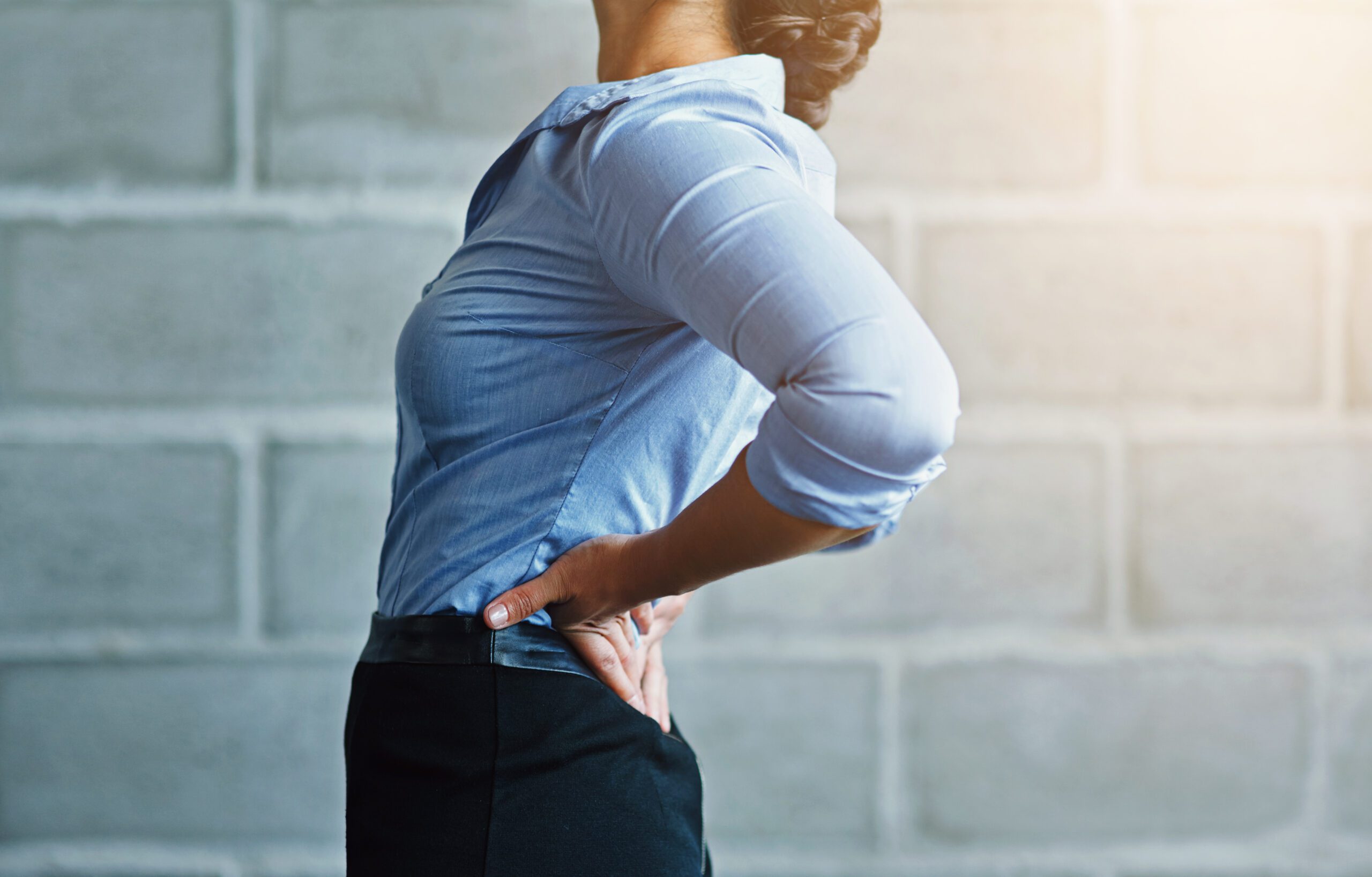Chiropractic Care and Wellness Benefits for Fibromyalgia
Learn about effective chiropractic care techniques to help relieve fibromyalgia symptoms and promote better health.
Fibromyalgia and Chiropractic Care: A Holistic Approach to Pain Relief and Musculoskeletal Health
Fibromyalgia is like that uninvited guest who shows up to the party and refuses to leave, bringing along a suitcase full of aches, pains, and exhaustion. For the millions of people living with this chronic condition, daily life can feel like navigating a maze blindfolded. The good news? Chiropractic care, especially from experts like Dr. Alexander Jimenez, DC, APRN, FNP-BC at ChiroMed – Integrated Medicine in El Paso, TX, offers a beacon of hope. This comprehensive, SEO-optimized blog post—crafted for a high school reading level—dives deep into how fibromyalgia impacts the musculoskeletal system, disrupts daily routines, and creates overlapping risk profiles that amplify pain and discomfort. We’ll explore why chiropractic care is a game-changer, highlight Dr. Jimenez’s expertise in personal injury cases, and sprinkle in some light humor to keep things engaging. Let’s get started on this journey to better health!
Understanding Fibromyalgia: The Basics
Imagine waking up feeling like you’ve been wrestling a grizzly bear all night, only to realize you just slept on your perfectly normal mattress. That’s the reality for many with fibromyalgia, a chronic condition that affects about 4 million adults in the United States, according to the Centers for Disease Control and Prevention (CDC). It’s characterized by widespread musculoskeletal pain, debilitating fatigue, sleep disturbances, and a foggy brain that makes you forget where you parked your car—or why you even walked into a room.
Fibromyalgia is a bit like a mystery novel with no clear ending. Its exact cause isn’t fully understood, but researchers point to a mix of genetic, environmental, and neurological factors. One key player is central sensitization, where the brain and spinal cord amplify pain signals, making even a light touch feel like a sledgehammer (Clauw, 2014). Another factor is oxidative stress, where an imbalance of free radicals and antioxidants damages tissues and fuels inflammation (Cordero, 2010). It’s like your body’s internal wiring is short-circuiting, sending pain signals on overdrive.
Fibromyalgia doesn’t just affect one part of the body—it’s a whole-body experience that can make everything from brushing your teeth to walking the dog feel like a Herculean task. To understand how chiropractic care can help, we first need to explore how fibromyalgia wreaks havoc on the musculoskeletal system.
References
Clauw, D. J. (2014). Fibromyalgia: A clinical review. JAMA, 311(15), 1547–1555. https://doi.org/10.1001/jama.2014.3266
Cordero, M. D. (2010). Oxidative stress in fibromyalgia: From pathology to treatment. Current Rheumatology Reviews, 6(3), 178–183. https://pubmed.ncbi.nlm.nih.gov/
Fibromyalgia’s Impact on the Musculoskeletal System
The musculoskeletal system—your bones, muscles, tendons, ligaments, and joints—is like the scaffolding that holds your body together, letting you move, dance, or even binge-watch your favorite show comfortably. Fibromyalgia, however, throws a wrench into this system, causing pain and dysfunction that can make you feel like you’re stuck in a body that’s betraying you. Let’s break down how fibromyalgia affects this critical system.
1. Widespread Pain and Tender Points
Fibromyalgia is like the world’s worst interior decorator, scattering pain across your body with no rhyme or reason. It often targets specific “tender points” like the neck, shoulders, back, hips, and knees, which become hypersensitive to touch. Research shows this is due to central sensitization, where the nervous system misfires, amplifying pain signals (Sluka & Clauw, 2016). It’s like your body’s pain dial is stuck on “maximum,” making even a friendly pat on the back feel like a karate chop.
2. Muscle Stiffness and Fatigue
Ever felt like you’re moving through molasses, with muscles that refuse to cooperate? That’s fibromyalgia’s muscle stiffness at work. It causes muscles to feel tight and achy, even if you haven’t been to the gym or lifted anything heavier than a coffee cup. This stiffness can limit your range of motion, turning simple tasks like reaching for a shelf or tying your shoes into a full-body workout.
3. Joint Pain and Reduced Mobility
While fibromyalgia isn’t an inflammatory condition like arthritis, it can still make your joints feel like they’ve been replaced with rusty hinges. This joint pain and stiffness reduce mobility, making it hard to stay active. The result? A vicious cycle where less movement leads to more stiffness, which leads to more pain. It’s like your body is saying, “Move it or lose it—but good luck moving!”
4. Postural Imbalances
Chronic pain often leads to compensatory movements. If your lower back hurts, you might slouch or shift your weight to one side, throwing off your posture. Over time, these imbalances strain muscles and joints, creating secondary pain and dysfunction. Picture your body as a Jenga tower—every misaligned move risks toppling the whole structure.
5. Overlapping Risk Profiles
Fibromyalgia doesn’t travel alone—it often brings along buddies like chronic fatigue syndrome, migraines, and irritable bowel syndrome, which amplify musculoskeletal issues. These overlapping conditions create a cascade of risks, including muscle weakness, joint instability, and increased injury susceptibility. Poor sleep, a common fibromyalgia symptom, impairs muscle recovery, while stress heightens pain perception, further taxing the musculoskeletal system (Choy, 2015). It’s like fibromyalgia is throwing a party, and all the guests are causing trouble.
References
Sluka, K. A., & Clauw, D. J. (2016). Neurobiology of fibromyalgia and chronic widespread pain. Neuroscience, 338, 114–129. https://doi.org/10.1016/j.neuroscience.2016.06.006
Choy, E. H. (2015). The role of sleep in pain and fibromyalgia. Nature Reviews Rheumatology, 11(9), 513–520. https://doi.org/10.1038/nrrheum.2015.56
How Fibromyalgia Disrupts Daily Life
Living with fibromyalgia is like trying to play a video game on expert mode with a glitchy controller. The pain, fatigue, and brain fog make everyday tasks feel like epic quests. Here’s how fibromyalgia can turn your daily routine upside down:
1. Morning Misery
Mornings are often the worst for fibromyalgia sufferers. Waking up with stiff, achy muscles feels like you’ve been sleeping on a bed of rocks. Simple tasks like getting out of bed, brushing your teeth, or pouring cereal can feel exhausting, setting a challenging tone for the day.
2. Work Woes
Whether you’re crunching numbers at a desk or hustling on your feet, fibromyalgia makes work a struggle. Prolonged sitting or standing worsens pain, while fibro fog clouds your focus, making it hard to remember deadlines or follow conversations. Imagine trying to give a presentation when your brain feels like it’s stuck in quicksand—that’s fibro fog.
3. Exercise Challenges
Exercise is vital for health, but fibromyalgia makes it a tightrope walk. Gentle movement can help, but overdo it, and you’re sidelined with a flare-up. It’s like your body is saying, “Sure, go for a jog, but don’t be surprised if I send you an invoice for the pain later.”
4. Social Struggles
Chronic pain can make socializing feel like running a marathon. Canceling plans or skipping family gatherings becomes common, leading to isolation and strained relationships. Even playing with kids or pets can be tough when every movement feels like a chore.
5. Emotional Impact
The constant battle with pain and fatigue can lead to anxiety, depression, and frustration. It’s hard to stay upbeat when your body feels like it’s working against you. This emotional toll can amplify pain, creating a feedback loop that’s tough to escape.
These disruptions show why fibromyalgia isn’t just a physical condition—it’s a whole-life challenge that demands a comprehensive approach to manage effectively.
Why Chiropractic Care Is a Game-Changer for Fibromyalgia
Enter chiropractic care, the superhero of non-invasive, holistic health solutions. At ChiroMed – Integrated Medicine in El Paso, TX, Dr. Alexander Jimenez and his team are using chiropractic techniques to help fibromyalgia patients find relief and reclaim their lives. But how does chiropractic care tackle this complex condition? Let’s explore the clinical rationale, with a dash of humor to keep things light.
1. Taming Central Sensitization
Fibromyalgia’s calling card is central sensitization, where the nervous system turns every sensation into a pain signal. Chiropractic adjustments, especially spinal manipulations, stimulate mechanoreceptors (sensors in joints and muscles), which can dial down pain signal transmission to the brain (El Paso Chiropractor Blog, 2016). It’s like turning down the volume on your body’s overzealous pain alarm system.
2. Restoring Spinal Alignment
Spinal misalignments, or subluxations, can worsen pain and muscle tension. Chiropractic adjustments correct these misalignments, improving nerve function and easing stress on the musculoskeletal system. Think of it as realigning the tracks so your body’s train runs smoothly again, without derailing into Painville.
3. Boosting Mobility and Reducing Stiffness
Gentle chiropractic techniques, like spinal mobilization and soft tissue therapy, loosen tight muscles and joints, improving range of motion. For fibromyalgia patients who feel like they’re stuck in a suit of rusty armor, this is a game-changer. Regular adjustments keep the musculoskeletal system limber, reducing the risk of compensatory injuries.
4. Easing Inflammation
While fibromyalgia isn’t primarily inflammatory, chronic pain can trigger low-grade inflammation. Chiropractic care may help by improving blood flow and supporting the body’s natural healing processes, potentially reducing oxidative stress (Cordero, 2010). It’s like giving your body a mini detox, minus the green juice cleanse.
5. Supporting Holistic Wellness
At ChiroMed, chiropractic care is part of a bigger picture that includes nutrition counseling, rehabilitation, and stress management. This holistic approach addresses the root causes of fibromyalgia, helping patients build resilience and reduce flare-ups. It’s like assembling a superhero team to fight fibromyalgia from every angle.
6. Tackling Overlapping Risk Profiles
Fibromyalgia’s buddies—chronic fatigue, poor sleep, and stress—can worsen musculoskeletal issues. Chiropractic care helps by improving sleep quality (through pain reduction) and supporting overall wellness, mitigating these risk profiles. It’s like solving the whole puzzle, not just one piece.
References
El Paso Chiropractor Blog. (2016, July). Fibromyalgia relief with chiropractic care. https://www.elpasochiropractorblog.com/2016/07/fibromyalgia-relief-with-chiropractic.html
Cordero, M. D. (2010). Oxidative stress in fibromyalgia: From pathology to treatment. Current Rheumatology Reviews, 6(3), 178–183. https://pubmed.ncbi.nlm.nih.gov/
Unlocking The Secrets of Inflammation- Video
Dr. Alexander Jimenez: El Paso’s Go-To Expert for Fibromyalgia and Personal Injury
In the heart of El Paso, Dr. Alexander Jimenez stands out as a trusted ally for those battling fibromyalgia and navigating personal injury cases. With over 25 years of experience as a chiropractor and family nurse practitioner, Dr. Jimenez brings a unique blend of clinical expertise and compassion to ChiroMed – Integrated Medicine (ChiroMed, n.d.). His LinkedIn profile showcases his dedication to holistic healing, combining chiropractic care, functional medicine, and advanced diagnostics (Jimenez, n.d.).
Personal Injury Expertise in El Paso
El Paso sees its fair share of personal injury cases, from car accidents to slip-and-falls. These incidents can exacerbate fibromyalgia symptoms, as trauma to the musculoskeletal system amplifies pain and stiffness. Dr. Jimenez is a distinguished practitioner in this field, known for his ability to bridge medical care and legal documentation. Here’s how he makes a difference:
- Advanced Imaging and Diagnostics: Dr. Jimenez uses state-of-the-art imaging, like MRI and X-rays, to pinpoint injuries with precision. This helps identify issues that may worsen fibromyalgia or complicate recovery, ensuring accurate diagnoses.
- Dual-Scope Procedures: As both a chiropractor and a family nurse practitioner, Dr. Jimenez employs a dual-scope approach, blending chiropractic adjustments with medical evaluations. This comprehensive care addresses both acute injuries and chronic conditions like fibromyalgia.
- Legal-Medical Liaison: Personal injury cases require detailed medical documentation for legal claims. Dr. Jimenez acts as a liaison, providing thorough reports that link injuries to clinical findings, helping victims secure fair compensation while meeting their medical needs.
Why It Matters
For fibromyalgia patients involved in personal injury cases, the stakes are high. A minor fender-bender can trigger a major flare-up, making daily life even harder. Dr. Jimenez’s expertise ensures these patients receive tailored care that addresses both their immediate injuries and chronic fibromyalgia symptoms, navigating the complex intersection of health and legal challenges.
References
ChiroMed. (n.d.). ChiroMed – Integrated Medicine, holistic healthcare in El Paso, TX. https://chiromed.com/
Jimenez, A. (n.d.). Dr. Alex Jimenez DC, APRN, FNP-C. LinkedIn. https://www.linkedin.com/in/dralexjimenez/
Complementary Therapies: The Dream Team for Fibromyalgia Relief
Chiropractic care is like the quarterback of fibromyalgia treatment, but it shines brightest when paired with a strong supporting cast. At ChiroMed, Dr. Jimenez and his team offer a range of services that complement chiropractic care to tackle fibromyalgia head-on. Here’s the lineup:
1. Physical Therapy Modalities
Physical therapy strengthens muscles, improves flexibility, and reduces pain. Techniques like low-level laser therapy, ultrasound, and manual therapy have shown promise in fibromyalgia management (Assis et al., 2013). It’s like giving your muscles a motivational speech to get back in the game.
2. Nutrition Counseling
What you eat matters when you’re fighting fibromyalgia. Anti-inflammatory diets rich in antioxidants can help reduce oxidative stress, a key player in fibromyalgia’s pathology (Cordero, 2010). ChiroMed’s nutrition counseling helps patients fuel their bodies for healing, not just surviving.
3. Acupuncture
Acupuncture, offered at ChiroMed, can reduce pain and improve energy flow by targeting specific points. It helps calm the overstimulated nervous system, like hitting the reset button on your body’s stress meter.
4. Stress Management
Stress is like pouring gasoline on the fibromyalgia fire. Mindfulness, yoga, and relaxation exercises, part of ChiroMed’s holistic approach, can lower stress and improve pain tolerance. It’s like telling your nervous system, “Take a deep breath, we’ve got this.”
5. Rehabilitation
Rehabilitation programs at ChiroMed focus on restoring function through targeted exercises and therapies. These programs help fibromyalgia patients rebuild strength and mobility, reducing the risk of future injuries.
References
Assis, M. R., et al. (2013). Efficacy of manual therapy on pain, impact of disease, and quality of life in the treatment of fibromyalgia: A systematic review. Pain Physician, 16(5), E493–E505. https://pubmed.ncbi.nlm.nih.gov/
Cordero, M. D. (2010). Oxidative stress in fibromyalgia: From pathology to treatment. Current Rheumatology Reviews, 6(3), 178–183. https://pubmed.ncbi.nlm.nih.gov/
The Science of Fibromyalgia: What’s Going On Under the Hood
To understand why chiropractic care works, let’s take a peek at the science behind fibromyalgia. Recent research has illuminated its complex mechanisms, and here’s the CliffsNotes version:
- Central Sensitization: Fibromyalgia involves an overactive pain-processing system, where the brain and spinal cord amplify pain signals (Sluka & Clauw, 2016). Chiropractic adjustments may help modulate these pathways.
- Oxidative Stress: An imbalance of free radicals and antioxidants damages tissues and worsens pain. Therapies that improve blood flow, like chiropractic care, can counteract this (Cordero, 2010).
- Not Autoimmune (Yet): While some wonder if fibromyalgia is an autoimmune disorder, current evidence suggests it’s more about neurological and biochemical dysfunction than autoimmunity (Giacomelli et al., 2013).
- Diagnosis Challenges: Fibromyalgia is diagnosed based on symptoms like widespread pain and fatigue, often using the American College of Rheumatology criteria. Advanced diagnostics, like those used by Dr. Jimenez, help rule out other conditions (Häuser et al., 2017).
These insights highlight why a multi-faceted approach, like ChiroMed’s, is so effective—it tackles fibromyalgia from multiple angles, addressing both symptoms and root causes.
References
Sluka, K. A., & Clauw, D. J. (2016). Neurobiology of fibromyalgia and chronic widespread pain. Neuroscience, 338, 114–129. https://doi.org/10.1016/j.neuroscience.2016.06.006
Cordero, M. D. (2010). Oxidative stress in fibromyalgia: From pathology to treatment. Current Rheumatology Reviews, 6(3), 178–183. https://pubmed.ncbi.nlm.nih.gov/
Giacomelli, C., et al. (2013). Is fibromyalgia an autoimmune disorder? Autoimmunity Reviews, 12(8), 790–795. https://pubmed.ncbi.nlm.nih.gov/
Häuser, W., et al. (2017). The diagnosis of fibromyalgia syndrome. Deutsches Ärzteblatt International, 114(22–23), 393–399. https://pubmed.ncbi.nlm.nih.gov/
Practical Tips for Managing Fibromyalgia
Living with fibromyalgia is like trying to herd cats while riding a unicycle—it’s tricky, but not impossible. Here are some practical tips, inspired by ChiroMed’s holistic approach, to help you manage symptoms and improve your quality of life:
- Stay Active (Gently): Low-impact exercises like walking, swimming, or yoga can boost mobility without triggering flare-ups. Start small and listen to your body.
- Prioritize Sleep: Create a relaxing bedtime routine and stick to consistent sleep schedules. A good night’s sleep can reduce pain and fatigue.
- Eat Smart: Focus on anti-inflammatory foods like fruits, vegetables, and omega-3-rich fish. Skip the processed foods and sugar, which can fuel inflammation.
- Manage Stress: Try mindfulness, meditation, or deep breathing to keep stress in check. It’s like giving your nervous system a warm hug.
- Seek Professional Care: Regular chiropractic visits at ChiroMed can keep your musculoskeletal system in check and reduce pain.
- Build a Support System: Connect with others who understand fibromyalgia through support groups or online communities. You’re not alone!
Conclusion: A Serious Note on Fibromyalgia and Chiropractic Care
Fibromyalgia is a complex condition that challenges every aspect of life, from physical health to emotional well-being. Its impact on the musculoskeletal system—causing widespread pain, stiffness, and reduced mobility—creates overlapping risk profiles that make daily tasks daunting. However, chiropractic care, led by experts like Dr. Alexander Jimenez at ChiroMed – Integrated Medicine in El Paso, TX, offers a powerful solution. By addressing central sensitization, improving spinal alignment, and supporting holistic wellness, chiropractic care can alleviate pain and enhance quality of life for fibromyalgia patients.
For those in El Paso dealing with personal injury cases, Dr. Jimenez’s expertise in advanced imaging, dual-scope procedures, and legal-medical liaison services ensures comprehensive care that bridges health and justice. His integrative approach, combining chiropractic care with physical therapy, nutrition, and stress management, tackles fibromyalgia from all angles, offering hope for lasting relief.
Disclaimer: This blog post is for informational purposes only and is not intended to replace professional medical advice. Fibromyalgia is a serious condition requiring individualized care. Always consult a qualified healthcare provider, such as Dr. Alexander Jimenez, DC, APRN, FNP-BC, for personalized diagnosis and treatment plans. For more information about ChiroMed’s services, visit https://chiromed.com/ or call (915) 412-6680.
Full Reference List
Assis, M. R., et al. (2013). Efficacy of manual therapy on pain, impact of disease, and quality of life in the treatment of fibromyalgia: A systematic review. Pain Physician, 16(5), E493–E505. https://pubmed.ncbi.nlm.nih.gov/
ChiroMed. (n.d.). ChiroMed – Integrated Medicine, holistic healthcare in El Paso, TX. https://chiromed.com/
Choy, E. H. (2015). The role of sleep in pain and fibromyalgia. Nature Reviews Rheumatology, 11(9), 513–520. https://doi.org/10.1038/nrrheum.2015.56
Clauw, D. J. (2014). Fibromyalgia: A clinical review. JAMA, 311(15), 1547–1555. https://doi.org/10.1001/jama.2014.3266
Cordero, M. D. (2010). Oxidative stress in fibromyalgia: From pathology to treatment. Current Rheumatology Reviews, 6(3), 178–183. https://pubmed.ncbi.nlm.nih.gov/
El Paso Chiropractor Blog. (2016, July). Fibromyalgia relief with chiropractic care. https://www.elpasochiropractorblog.com/2016/07/fibromyalgia-relief-with-chiropractic.html
Giacomelli, C., et al. (2013). Is fibromyalgia an autoimmune disorder? Autoimmunity Reviews, 12(8), 790–795. https://pubmed.ncbi.nlm.nih.gov/
Häuser, W., et al. (2017). The diagnosis of fibromyalgia syndrome. Deutsches Ärzteblatt International, 114(22–23), 393–399. https://pubmed.ncbi.nlm.nih.gov/
Jimenez, A. (n.d.). Dr. Alex Jimenez DC, APRN, FNP-C. LinkedIn. https://www.linkedin.com/in/dralexjimenez/
Sluka, K. A., & Clauw, D. J. (2016). Neurobiology of fibromyalgia and chronic widespread pain. Neuroscience, 338, 114–129. https://doi.org/10.1016/j.neuroscience.2016.06.006

